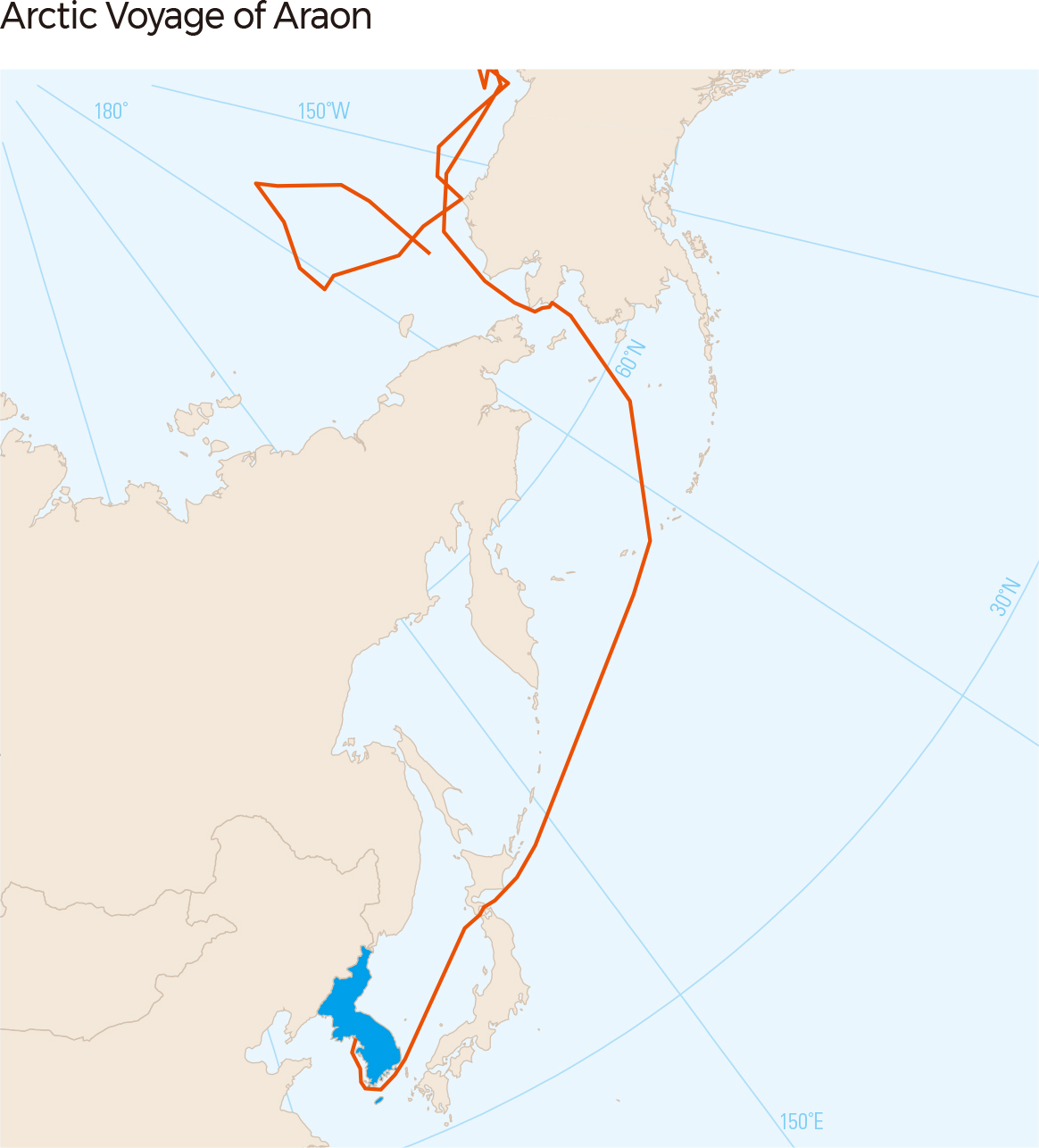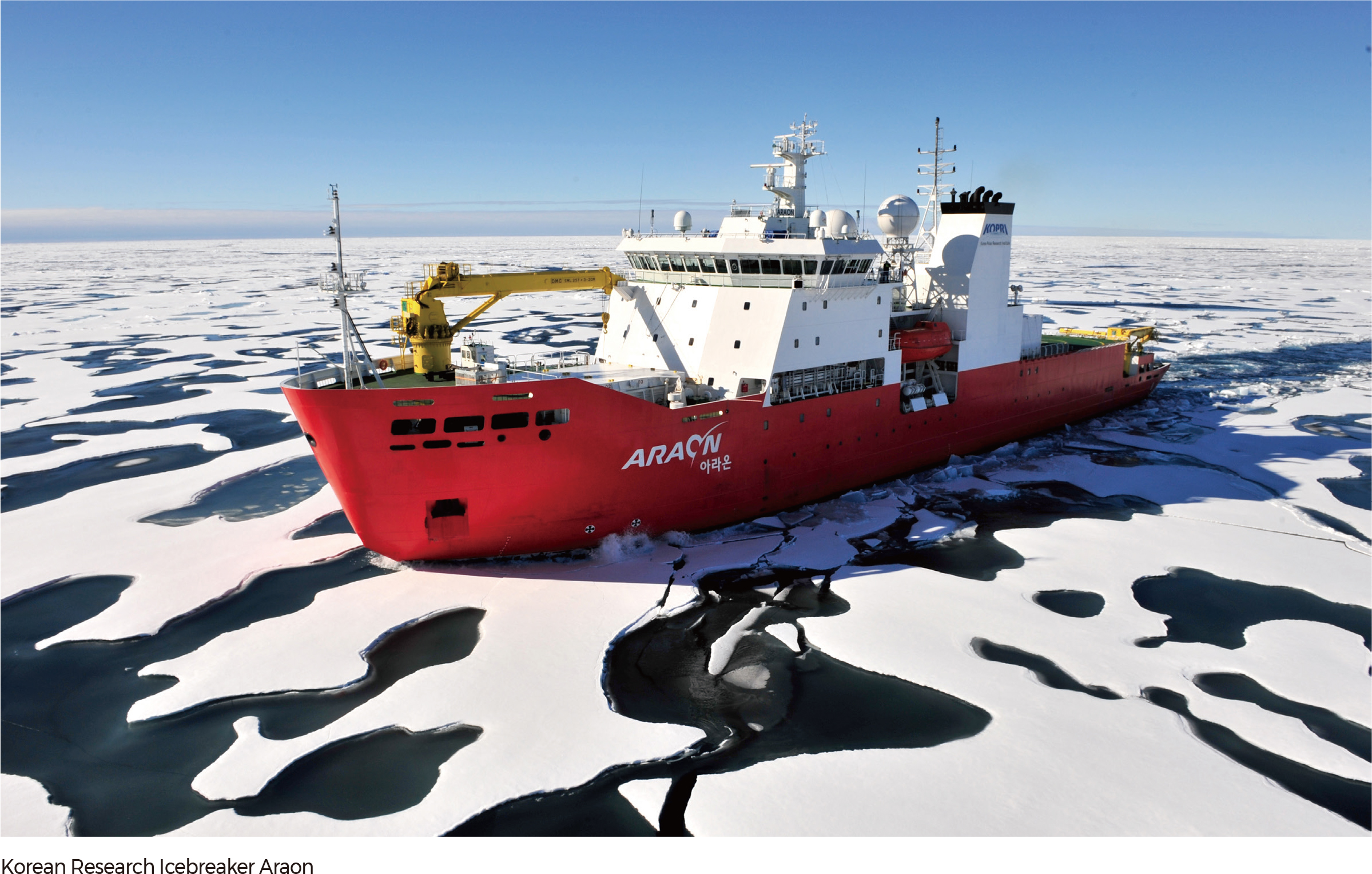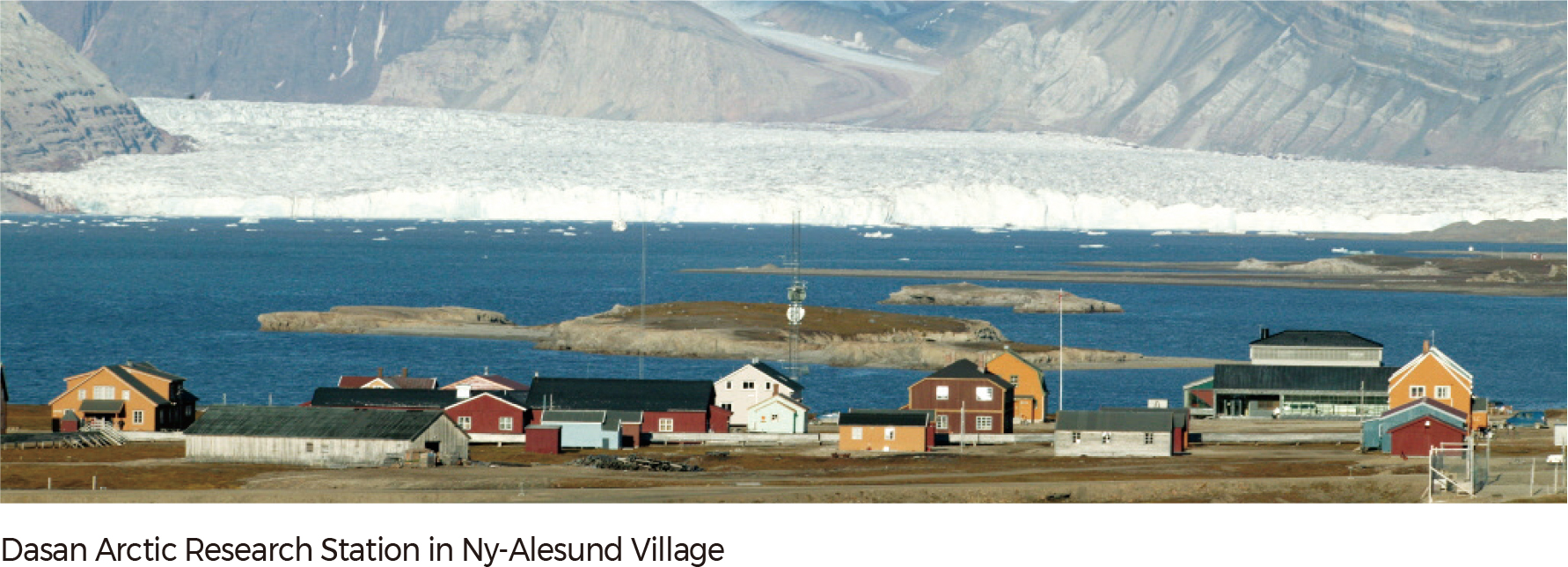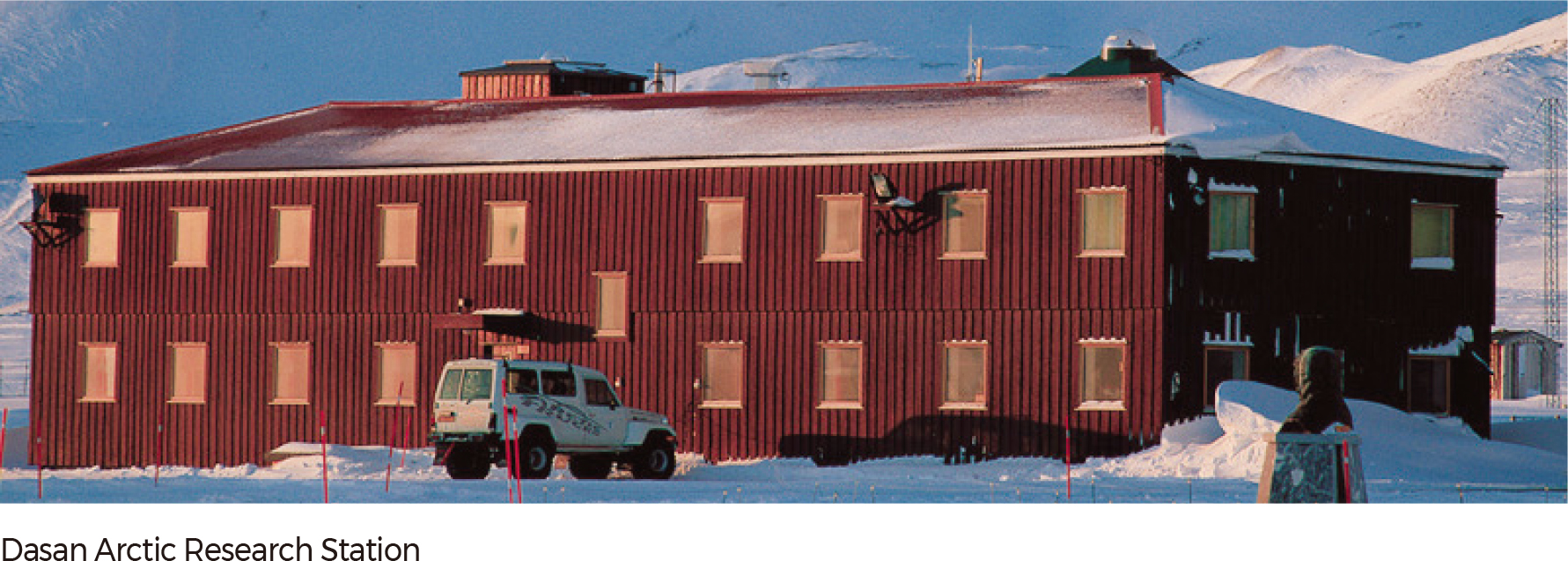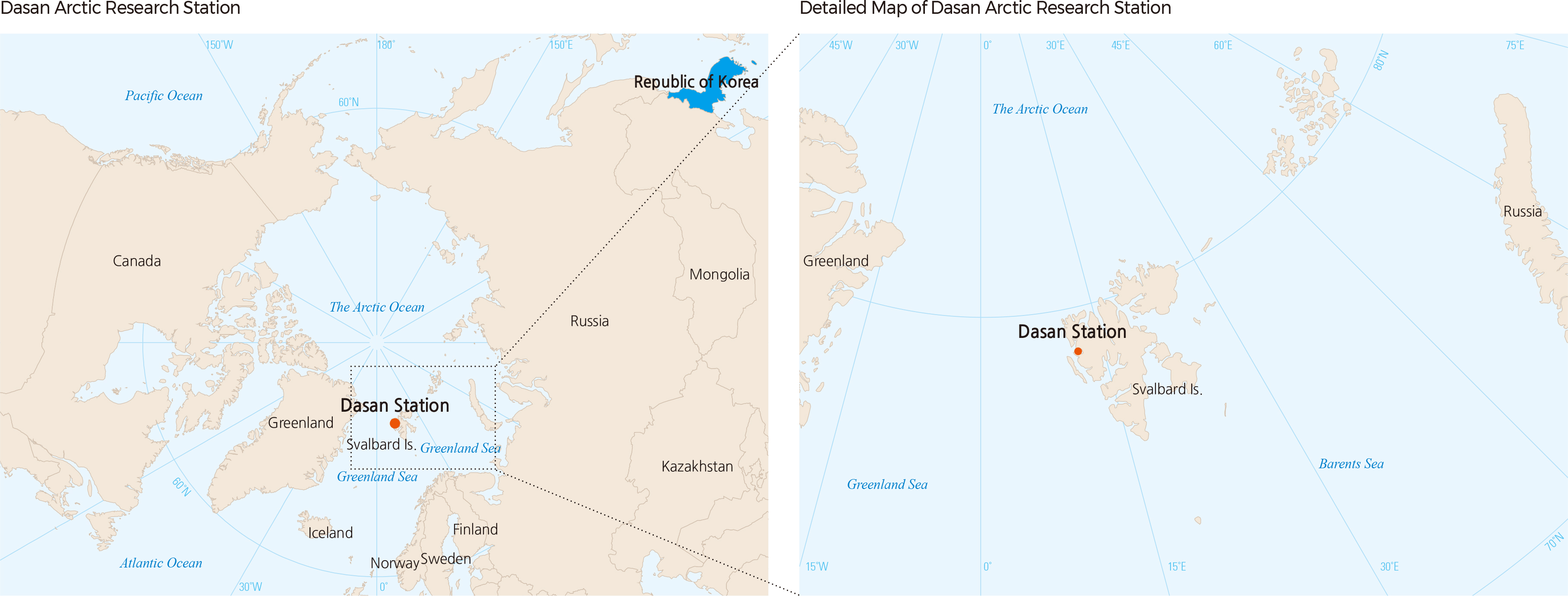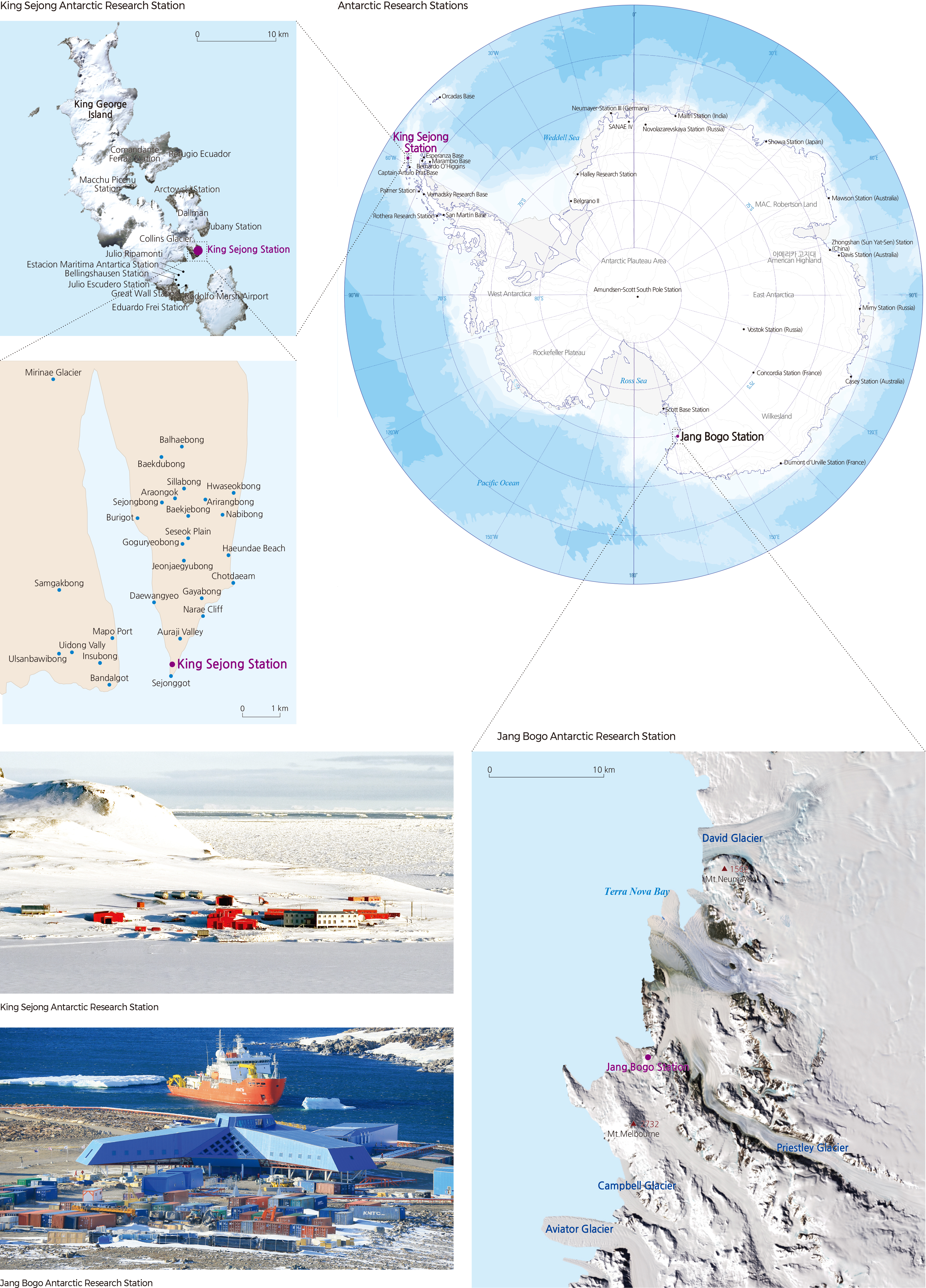English I 2019
Conducting scientific research expeditions into oceanic and polar areas well beyond the boundaries of Korean territory, waters, and airspace represents an important step in Korea's contribution to the global scientific community. Participation by Korean researchers on projects located in the international scientific territory (non-sovereign areas in international waters and airspace as well as polar research stations) fosters international cooperation but no gains in territory or resources. Korea, with its advanced technological capabilities, has a deep commitment to make research contributions that deal with global issues such as climate change and the degradation of the global environment. Its continued presence in research stations worldwide is a testimonial to this commitment.
In 1988, Korea’s polar research began in earnest with the construction of the King Sejong Antarctic Research Station (Korea’s permanent Antarctic research base). Since then, Korea has conducted a variety of research and expedition activities on the environment surrounding the station, and in 2014 Korea built the Jang Bogo Antarctic Research Station, broadening the scope of their research and expedition to include areas closer to the South Pole. In 2009, the country started developing geographic information by mapping and measuring its Antarctic base and its neighboring area. It has contributed 27 names of Antarctic places (17 in 2011 and 10 in 2012) in the Composite Gazetteer of Antarctica (CGA). With the 2002 opening of the Dasan Arctic Research Station, Korea’s research on the North Pole accelerated. In 2012, Korea obtained permanent observer status in the Arctic Council, thereby gaining direct participation in the development of North Pole routes and resources. In 2009, it embarked on a voyage with the nation’s first research icebreaker vessel, Araon, which has conducted independent polar research in the Arctic and Antarctic frozen waters, explored new routes, and provided supplies to land-based polar research stations. Based on submarine topography data collected by Araon in October 2013, South Korea registered two undersea feature names with the International Hydrographic Organization (IHO): Dolgorae Hills (Dolphin Hills) and the Kkotsin Knoll (Floral Shoes Knoll). In January 2014, Korea published a provisional marine chart of the waters around the Jang Bogo Antarctic Research Station.
Korea constructed the Dasan Arctic Research Station, which became operational on April 29, 2002. With the completion of this station, Korea became the 8th country in the world that has research stations in both the North and South Poles. The Dasan Arctic Research Station is situated at Ny-Alesund (78° 55' N Latitude, 11° 56' E Longitude) on the Arctic island of Spitsbergen, part of the Svalbard Archipelago. The station, which was set up to explore the Arctic environment and resources, performs multiple roles as an observation base for a variety of research projects including frozen soil layer data collection, aerosol and frozen land-atmospheric circulation of greenhouse gases, and arctic ecosystems.
|

